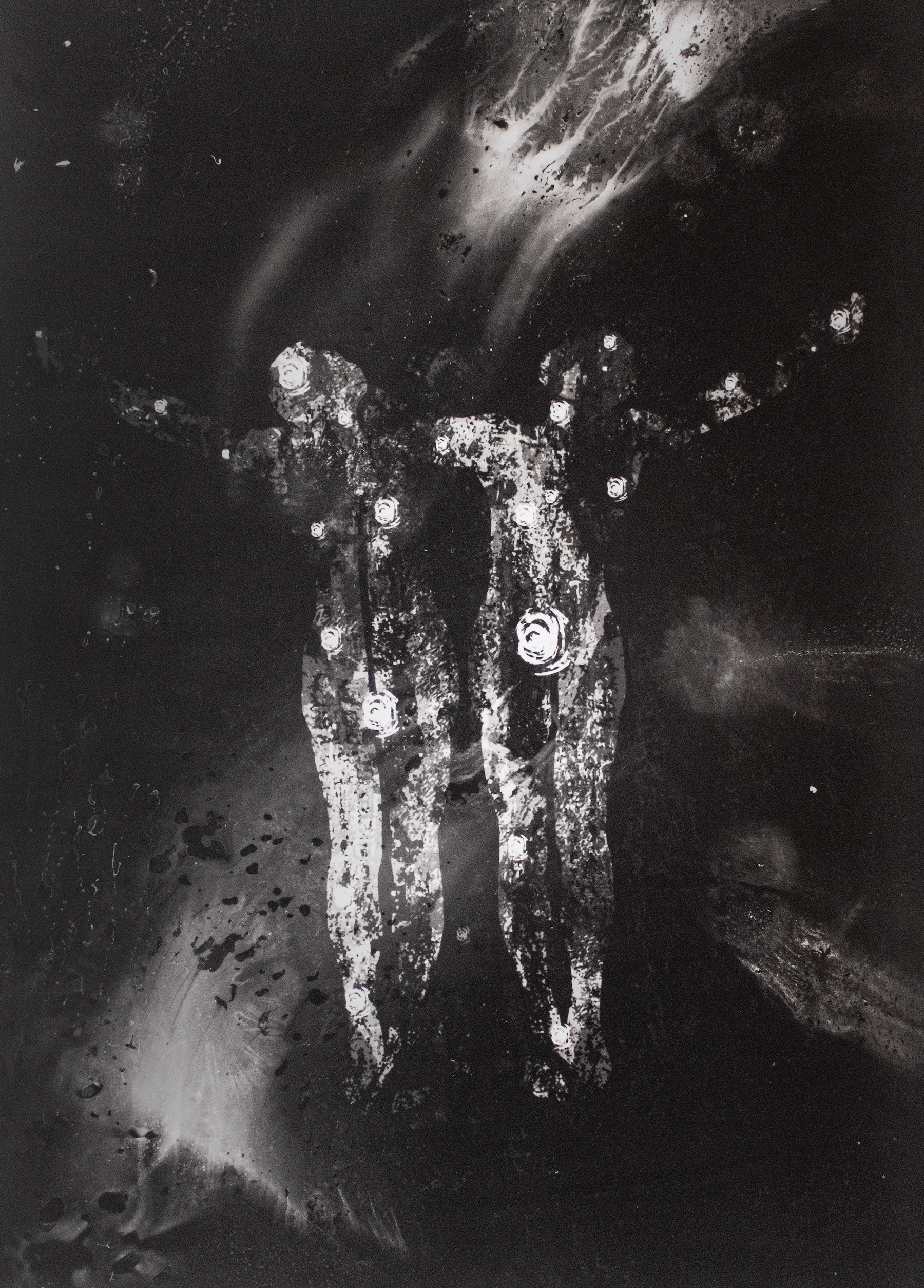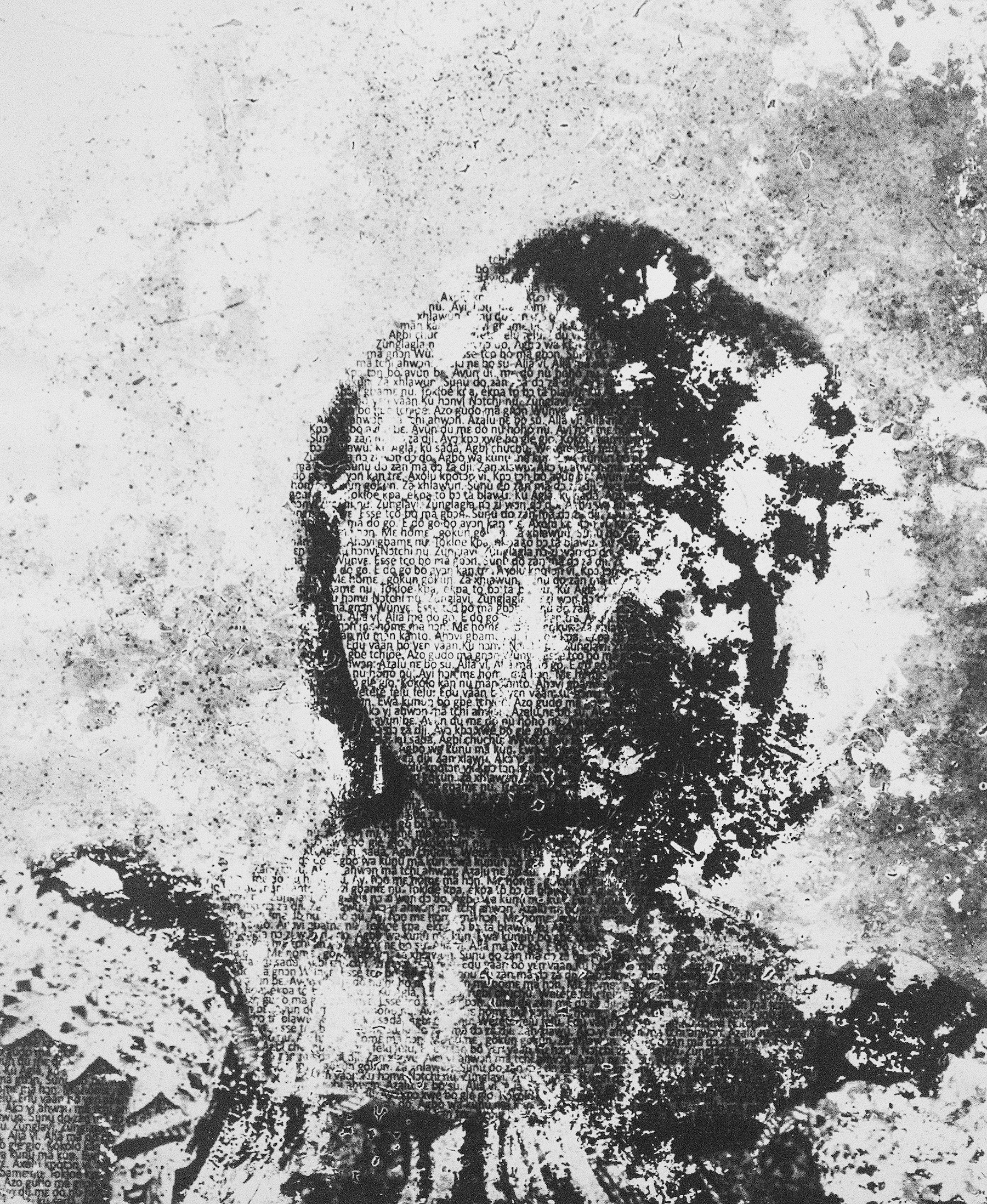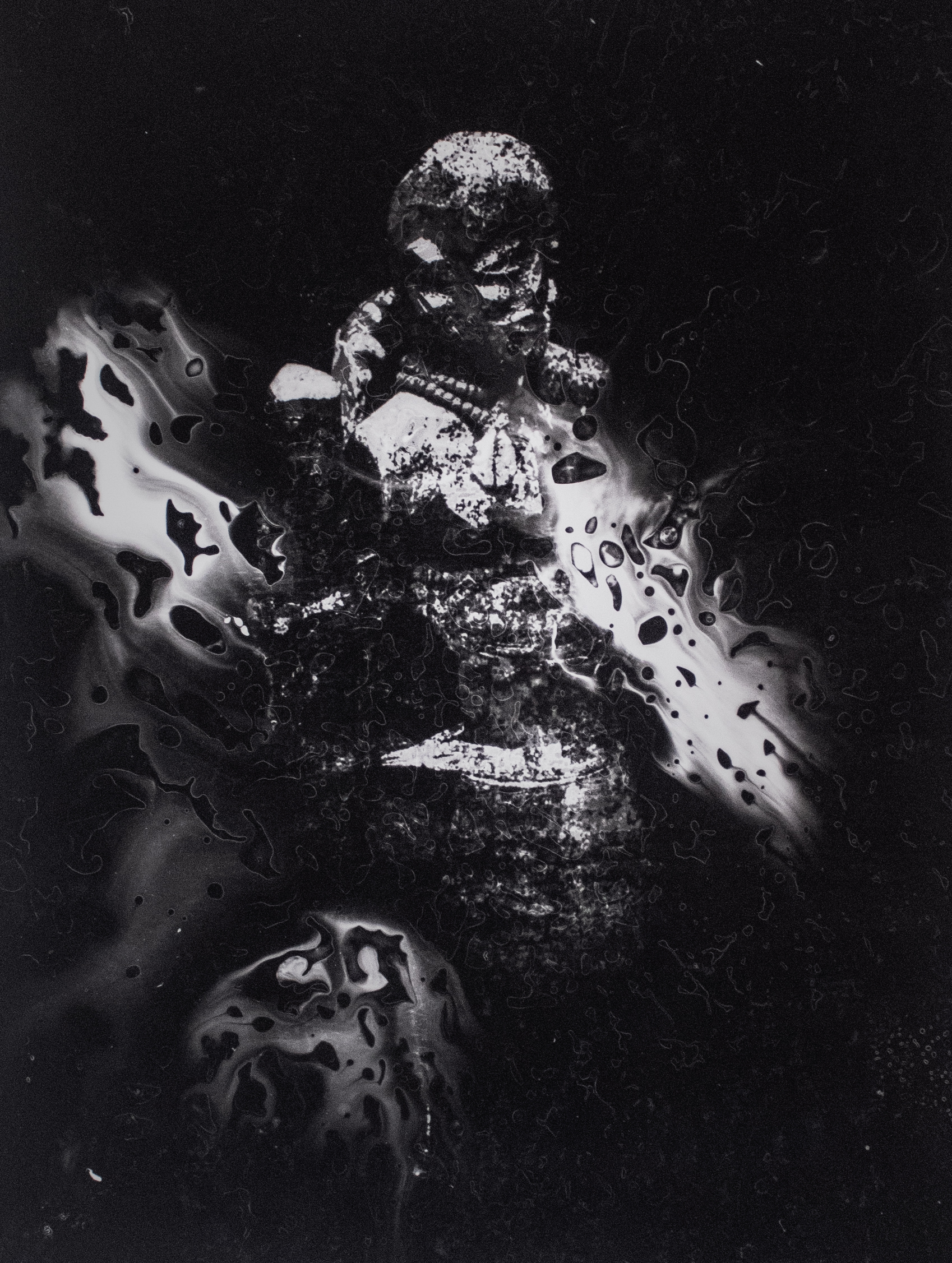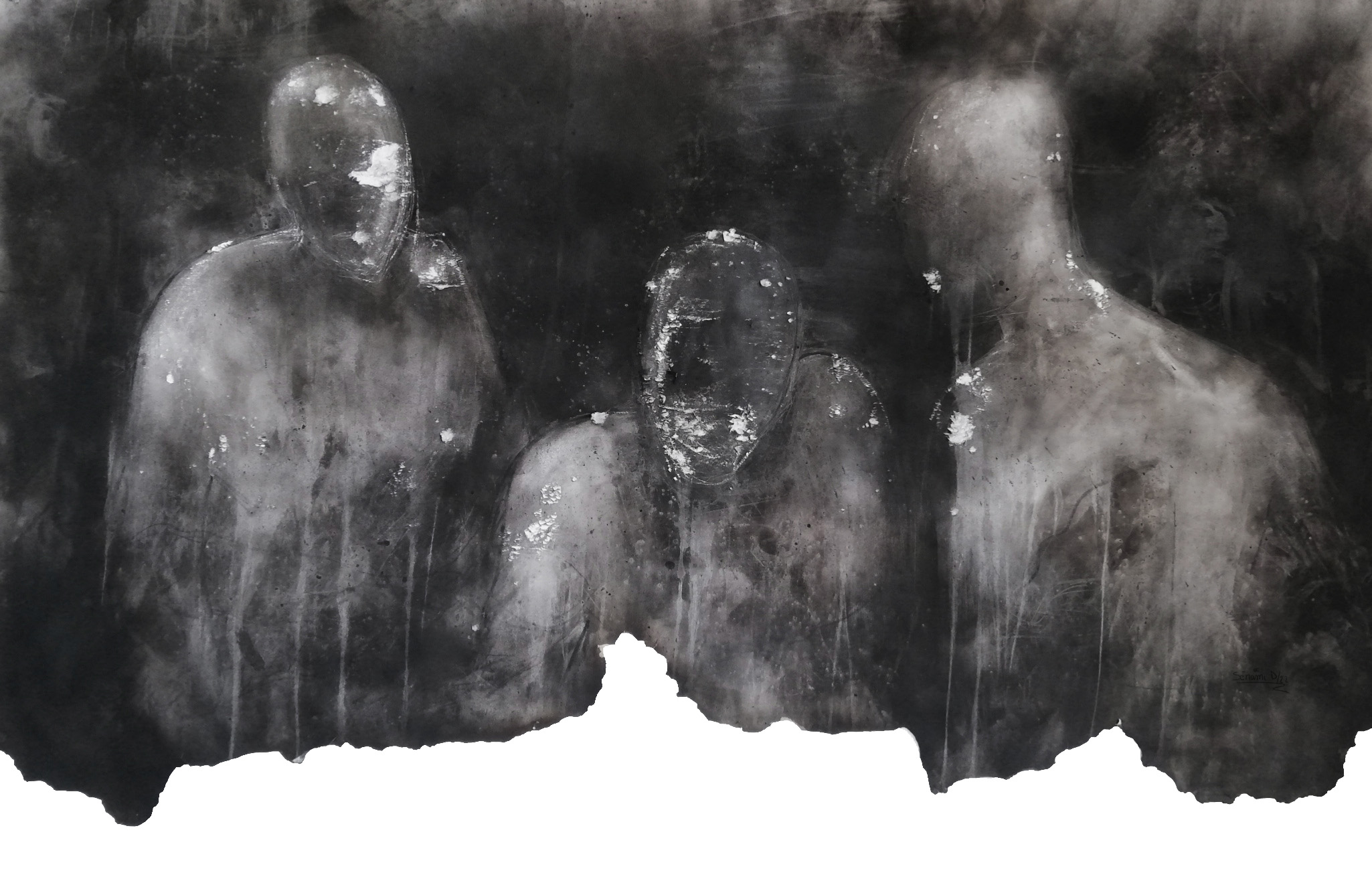All images © Sènami Donoumassou
Next in Ones to Watch is Sènami Donoumassou, whose experimental photograms won her the inaugural James Barnor Prize
With a richly diverse background in drawing, painting, graphic design and illustration, Sènami Donoumassou began to develop “a particular interest in light as a medium, having always been fascinated by the effects of light and shadow”. Donoumassou is based in Benin, where she was born and raised, but it was during a one-month residency at Le Fresnoy – Studio National des Arts Contemporains, France, in 2018 that she started exploring photograms “as a way of merging my artistic practice”. Her images appear phantasmic and eerie, yet substantial all the same: spirited and macular, animated but hushed, alluding to layers beneath the mantle of reality.
She employs photosensitive silver paper and light to fashion camera-less images, thinking of the photogram as a form of sculpture in which she shapes the paper’s two-dimensional surface with traces left by light. Using archival photographs or images she has taken herself, as well as various materials such as water, sand or leaves, she finds ways to rediscover contact with matter and texture in her creative process, elements familiar to her from painting. “With this technique, each image created is singular, and there’s also an element of randomness,” she says. “I see photosensitive paper as a metaphor for the human body and mind, each one bearing traces of its relationship with the world, its past, its community.”

“Africa’s art scenes, reflecting the diversity of its cultures and youth, are constantly evolving, multiple and ebullient”
In 2022 Donoumassou was the first recipient of the James Barnor Prize, an award which “supports photography talents in the African continent or wider African diaspora”. Curator and art historian Taous Dahmani nominated Donoumassou for the prize as well as for Ones to Watch, and remains intrigued by her work. “Her ability to oscillate between figuration and abstraction impresses me, as does her indifference towards prevailing trends,” she explains. “Instead, Sènami charts a course through her own meditations on local narratives and fables, showcasing a unique and introspective approach to her craft.”
For the James Barnor Prize, Donoumassou submitted three series of photograms. The first two were presented at her debut solo show, Chimie des Traces (‘Chemistry of Traces’), at Institut Français in Cotonou, Benin, exploring the construction of identity through psychogenealogy. The final series was presented at her second solo show at Le Centre, Cotonou, and explored clan panegyrics – the tales recounted publicly, at ceremonies or in day-to-day life, that cement the history of a family or community. These works were created from photographs, drawings and technical manipulations in the darkroom, made after Donoumassou spent considerable time doing research and conducting interviews. The resulting prize gave her the resources to continue her work, and validated a technical form little-used on the African continent.



Nonetheless, sweeping statements about African art practices are not something she condones. “In Africa, there isn’t just one art scene, but rather a diversity of scenes,” she points out. “These multiple universes are often grouped together under the generic term ‘African art’. This terminology seems to me to stifle reality. The continent’s art scenes, reflecting the diversity of its cultures and youth, are constantly evolving, multiple and ebullient. Artists use a multitude of techniques to write their stories, their relationships with the world, their sensibilities, and reinvent themselves through new narratives.”
Currently in residence at Villa Saint-Louis Ndar at the Institut Français in Senegal, Donoumassou is now working on a series about myths and rites, exploring how collective imaginary narratives influence the practices that allow individuals to integrate within their communities and environments. Her other interests include a series of images titled around Ombre (literally ‘shaded’), in which she uses soot – “still light but on drawing paper”.


